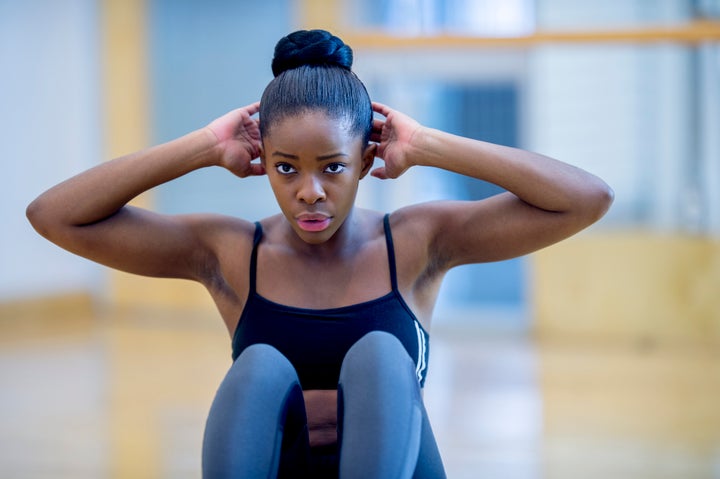Sometimes when you do a sit-up, it can feel like you’re giving your neck more of a work out than your abs. If this is true for you Ben Alldis, an instructor at Core Collective, says it’s sign you need to re-evaluate your method.
“When you perform a sit-up, your spine undergoes compression, putting pressure on the discs between your vertebrae. Neck strain is often caused by poor technique and involves too much neck flexion, ” he told HuffPost UK.
With that in mind, we asked the two coaches for their top tips on how do to a sit-up properly so they’re no longer a pain in the neck - literally.

Personal trainer Dom Thorpe said you may be more prone to neck strain if you’re new to sit-ups as “the neck muscles simply aren’t used to holding a contraction for that length of time”.
“Whereas your stomach muscles contract and relax during the exercise, your neck muscles tend to remain contracted throughout in order to keep your head supported. Sustained contractions like this cause the typical burning sensation in the muscles due to lactic acid build up,” he said.
To limit your experience of neck strain, Thorpe recommended building up the amount of sit-ups you do per session gradually over time rather than aiming for 50 on your first go.
Alldis recommended following these steps to engage the core, reduce pressure on the neck and complete the perfect sit-up:
Step 1: Lie on your back on an exercise mat. Bend your knees and plant your feet about hip-distance apart. Place your hands on the back of your head, where it attaches to your neck. Point your elbows to the sides of the room. Keep your hands light on the back of your head and the elbows open wide. Never tug or fold your neck.
Step 2: Exhale and pull your belly button in toward your spine as you gently raise your torso by bending your hips and waist. Lift up until your torso is just inches from your thighs. Your head, neck and abs should be in one straight line. If your neck is coming up first, make the change.
Step 3: Inhale and control your return to the start position to complete one repetition.
While Thorpe said the risk of serious injury is low if you occasionally feel neck strain during a sit-up, Alldis said you shouldn’t ignore the sensation if it’s a regular occurrence.
“Over many repetitions, the compression being put on the discs between your vertebrae can result in swollen or herniated discs, which can be very painful,” he said. “Any pain experienced while exercising can be a warning sign that something is wrong, and the neck pain associated with the movement should not be ignored.”